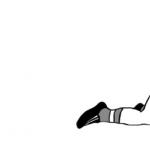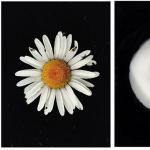Good afternoon I ask for help in repairing and insulating an old adobe house. The house was built in 1937. Adobe size 20x20x40. Over the years it has become so dense that it has become like stone. There was a need to disassemble part of the corner - we could barely do it, the adobe blocks were so firmly attached to each other. But the house is cold. The windows were replaced with modern ones, the slopes and window sills were sealed to perfection - there is no draft from them anywhere. The house is lined with rubble bricks. The foundation is also adobe. The floor is cold. Heating is from a boiler - there are radiators and PVC pipes in the rooms. But even with a frost of 10 degrees, the walls are cold. How to insulate a house?
Olga, Salsk, Rostov region.
Hello, Olga from Salsk, Rostov region!
Unfortunately, I can’t be of any real help other than advice. You live too far from me for me to come to you with my workers and try to rectify the situation.
From existing practice I can say the following. There are buildings that, no matter how much they insulate, they still remain cold.
And in order to create a comfortable temperature in the room, it is necessary to have a constantly operating powerful heating system. Which is associated with high costs of fuel or other energy resources.
Let's first step back and think purely theoretically.
You have a fairly strong adobe house lined on the outside with bricks set on edge, which was done to make it more beautiful on the outside. Most likely there is no insulation between the adobe and brickwork. As a result, the walls form an array that accumulates the temperature regime that is dictated mainly by the external temperature background.
It is clear that heating the internal space slightly increases the temperature of the walls, but not sufficiently. In addition, the temperature inside the room is significantly influenced by the surfaces of the ceiling (indirectly both the attic and roof) and the floor.
Based on these tedious theoretical conclusions, it follows that in order for the temperature inside the house to be bearable for living even in the very cold season, it is necessary to insulate, or rather isolate the flow of cold on all these surfaces. Including windows and doors, which are conductors of cold.
You write that the windows are made to last and the cold does not pass through them. The doors facing the street should also have thermal curtains, or, in short, adapter vestibules or similar curtains should be built.
Therefore, all that remains is to insulate the walls, floor and ceiling.
Most often, when covering adobe walls with bricks in problem houses, insulation is placed between the adobe and the brick. Since you have not done this, you should insulate according to one of two options. Or outside the house. Or inside the house. The second option is most likely suitable for your case. Because if you do insulation from the outside, you will be tormented by heating the heating system.
Ideally, insulation in such cases is done as follows. The walls are covered with clapboard, which is mounted on beacons (cranial block with a cross-section of 75/50 millimeters). Insulation 50 millimeters thick is laid between the beacons. Then an air gap of 25 millimeters is left between the insulation and the lining. The insulation is covered with a vapor barrier film on both sides. The distance between beacons is usually made 600 millimeters, a multiple of the size of most insulation.
That is, once again and in order, the whole technology of wall insulation.
A vapor barrier film is attached to the adobe walls. Beacons 75/50 are attached to the walls with self-tapping anchors and installed on the edge. Between the beacons, insulation is attached with “fungi” (screws with plates or special purchased ones). A second layer of film is mounted on the beacons. An air gap of 25 millimeters is obtained between it and the insulation. The clapboard is nailed down (instead, other materials such as plywood, various panels, slabs, etc. can be installed)
The insulation of the ceiling from the inside of the room is carried out using the same method as the insulation of walls. In addition, in the attic space the floor can also be insulated by laying insulation (from expanded clay to mineral slabs or rolls).
Floor insulation is a special matter. This insulation is sometimes more important than wall insulation, since there is not always a warm basement or underground under the house. If possible, then both the base and the ceiling above the basement are insulated approximately according to the same scheme as described above. If there is no trace of a basement or subfloor, then a radical alteration is not ruled out. When the entire old floor is exposed to a decent depth.
That is, floor boards and joists are dismantled, soil is removed to a certain depth. After which a new floor is installed in the form of a layer cake. The soil is leveled, waterproofing made of roofing felt or its analogues is laid. Approximately a 15 cm layer of expanded clay is poured. Then a reinforced concrete screed with a thickness of 5 centimeters or more is made. Floor joists are laid and antisepticized. Laying the floor.
It is clear that all this is quite a long process in terms of time and material costs. It is associated with many inconveniences in removing furniture or dragging it from place to place so as not to interfere with work. Possible dismantling of the heating system pipes and its batteries, since they need to be moved from the old walls by 75 millimeters plus the thickness of the wall material. The internal usable volume of the room will also decrease by double this size. It is also possible to reduce the height of the room by lowering the ceiling surface and raising the floor.
But ultimately, the thermal conditions inside the room increase and you will feel much better than before.
There are, of course, many other insulation options. But the one given is the most frequently used.
Other questions on the topic of adobe houses.
In order to protect from rain, houses made of wood or adobe (clay with chopped straw) are often sheathed with boards that rot rapidly. And plastering a wall containing organic matter is not only useless, but also harmful. The coating cracks, the wall stops “breathing” and fungus appears.
A more reliable solution is to use modern plastic lining (PV), plus proper wall ventilation. You can even lay insulation.
Here is a diagram of such a design (Fig. 1). Air penetrates through the ventilation hatch into the space between the sheathing and the wall (or insulation), rises up and exits near the roof. It is important that the ventilation gap is at least 1-2 cm.
We cover it on top with a fiberglass façade plaster mesh and nail it in with nails and plastic washers (cut from 4×4 cm containers). We place copper wire under the washers, tying the fabric.
We nail plaster shingles in the center. Caring for the wall is very simple: in the spring we open the hatches so that it dries out properly, and close it in the winter.
Attention!
You cannot use polystyrene foam, pressed glass wool slabs and mineral wool on aluminum foil for insulation - these are airtight coatings.
Decorating the walls of an adobe house and ventilation device: drawings
 Two-color soft silicone strap for honor band 4/honor band 3...
Two-color soft silicone strap for honor band 4/honor band 3...
247.03 rub.
Free shipping★★ ★★ ★★ ★★ ★★ (4.90) | Orders (40)
 Funny disgusting fake chair joke trick device realistic prank...
Funny disgusting fake chair joke trick device realistic prank...
What is the best way to insulate a house from the outside? This question worries all owners. The cool temperature in a living room during the cold season creates discomfort; in addition, money is wasted on additional heating, which is not practical.
The range of modern insulation materials is large. To choose the right thermal insulation, you need to familiarize yourself with the technical characteristics of each.
External insulation: choice of material
The market for modern thermal insulation materials is large. These are both synthetic and natural insulation materials. All of them differ from each other in technical characteristics - thermal conductivity, water absorption, specific gravity, installation methods, strength and others.
Among the natural materials for insulating a house outside are the following:
- adobe (clay + straw + additives);
- expanded clay (relevant if the owner decides to build an additional external wall of half a brick);
- warm plaster.

The range of synthetic insulation materials that can be used to cover the outside walls of a house is wider:
- expanded polystyrene (regular and extruded);
- polyurethane foam;
- penoizol;
- mineral wool (basalt is preferable).
All insulation materials can be divided into two groups:
- for self-installation;
- for professional installation.
The first include any types of plasters (adobe and warm), expanded polystyrene (foam plastic and penoplex), mineral wool, expanded clay.
 Polyurethane foam can be considered an ideal thermal insulation for the outside of a house, but only specialists can sheathe (insulate) it with it, since the material is sprayed.
Polyurethane foam can be considered an ideal thermal insulation for the outside of a house, but only specialists can sheathe (insulate) it with it, since the material is sprayed.
The situation is similar with penoizol (urea foam). This is liquid thermal insulation, the installation of which requires special installation and high-quality protection of the insulation from moisture.
In order to choose the right material, you need to decide on some conditions:
- financial component;
- quality of insulation;
- complexity/ease of installation.
The most expensive insulation can be called thermal insulation of the house from the outside with polyurethane foam. The cheapest option is polystyrene foam. In addition, it is lightweight, so self-assembly is possible (you can sheathe the outside of a house in a day). This insulation does not require sheathing; it is glued directly to the wall with special glue.
Advice. Expanded polystyrene (foam plastic/penoplex) is demanding on the quality of walls. Therefore, before insulation, they need to be put in order - cleaned of the flaking old coating, checked with a level for deviation from the horizontal and leveled, if necessary.
The next most expensive option is mineral wool. It is not demanding on the evenness of the walls, but it requires double-sided waterproofing and installation of a ventilated facade, which entails additional labor costs.
Which insulation do you prefer? To answer this question, you need to consider some of the technical characteristics of each of them, and also decide how difficult it is to sheathe the outside walls of a house with one material or another.
Expanded polystyrene
 Polystyrene foam and penoplex are representatives of expanded polystyrene. The differences in price between these insulation materials are significant. The same can be said about their technical characteristics:
Polystyrene foam and penoplex are representatives of expanded polystyrene. The differences in price between these insulation materials are significant. The same can be said about their technical characteristics:
- Thermal conductivity. For polystyrene foam and penoplex it is approximately the same, but the water absorption of the first is 4 times higher (4% per day) than that of the second. Penoplex almost does not absorb moisture, so it is recommended for insulating walls outside.
- Strength/fragility. Polystyrene foam is difficult to work with because it is fragile and crumbles when cut. Penoplex has a fine-cell structure, and all the cells are very firmly connected to each other, so the material is much stronger than polystyrene foam in bending and compression. It can be cut with a regular or stationery knife, the cut will not crumble.
- Flammability. Expanded polystyrene is a combustible insulation material. However, their modern versions are produced using fire retardants, which significantly reduces the risk of accidental fire. When choosing a material, pay attention to the “G” marking. G1 is a highly flammable, self-extinguishing insulation material. There is also foam plastic specifically for insulating facades - PSB-S-25F. The proportion of fire retardants in this composition is significant, so it is prohibited to use it for insulation inside residential premises.
- Sensitivity to solvents. Polystyrene foam and penoplex are sensitive to organic solvents, therefore, to cover a house with them, use polyurethane foam glue or dry compounds, which are sealed with water according to the instructions immediately before use.
- Need for finishing. Both types of polyurethane foams must be protected from weather conditions. For these purposes, plastering on a fiberglass mesh and further painting or application of bark beetle plaster are used. It is permissible to use warm plaster as additional insulation on the outside.
 Important
. Polystyrene foam and penoplex are quite fragile insulation materials. Therefore, the layer of plaster mortar should be small.
Important
. Polystyrene foam and penoplex are quite fragile insulation materials. Therefore, the layer of plaster mortar should be small.
The disadvantage of such thermal insulation of walls is that rodents love to make nests in polystyrene foam. To prevent them from reaching the insulation, it is necessary to install a zero level from a metal profile. There is no other way to protect against mice getting into the insulation.
Mineral wool
 Many people choose this insulation and this is quite reasonable. Its technical characteristics are more than attractive:
Many people choose this insulation and this is quite reasonable. Its technical characteristics are more than attractive:
- The material is produced in various densities, which makes it possible to sheathe it not only for the walls of a house from the outside and inside, but also to use it for thermal insulation of the floor or roof.
- The form of mineral wool is mats, rolls, slabs, as well as foil insulation.
- Basalt thermal insulation does not burn and can withstand heating up to 1000°C. This allows it to be used not only for insulating walls, but also for chimneys.
- The thermal conductivity of mineral wool is low.
- Water absorption is artificially reduced due to impregnation with water repellents, but during installation it is still necessary to lay waterproofing on both sides of the insulation.
- Rodents are indifferent to cotton wool.
- The material is inert to most chemical and organic solvents.
- Cotton wool is easy to work with, so do-it-yourself installation is possible.
Technology for installing mineral wool on walls outside and inside - using glue and frame. In the first case, finishing is done with plaster (wet facade system), in the second - with siding, block house, porcelain stoneware (curtain and ventilated facade systems).
Frame technology for installing mineral wool includes the following steps:
- The wall of the house is treated with an antiseptic and dried.
- Then the waterproofing is installed and the vertical sheathing bars are filled.
- The insulation is cut to size and installed in the niches of the sheathing by surprise (either “dangling” or “bulging” is unacceptable).
- After this, the mineral wool is covered with a vapor barrier membrane.
- You can additionally install horizontal guides that will fix the wool in the niches.
No additional steps are required to properly sheathe the outside of a house with mineral wool. The final finishing of such insulation is siding, block house, porcelain stoneware - any options installed on a frame or sheathing.
Expanded clay and adobe
 Natural insulation materials are cheap and purchasing them is not a problem. Therefore, quite often owners of private houses choose them. In addition, they are environmentally friendly and breathable, which is attractive for many.
Natural insulation materials are cheap and purchasing them is not a problem. Therefore, quite often owners of private houses choose them. In addition, they are environmentally friendly and breathable, which is attractive for many.
The walls of the house are insulated with expanded clay at the construction stage. You can do this after it is finished, but for such insulation you need to lay out additional walls at a distance of about 20 cm from the main ones. The result will be well masonry. The space between the walls must be insulated from moisture and covered with expanded clay (mix insulation of different fractions), then poured with cement laitance to reduce its subsidence and increase strength.
Important . As additional thermal insulation, walls already insulated with expanded clay can be finished on the outside with warm plaster.
 Adobe has been used to insulate the walls of houses for a long time. But the technology for compiling it is complex. No one knows the exact recipe for the plaster composition, since much depends on the quality of the clay. Therefore, this method of insulating walls from the outside is considered complex and time-consuming (every time the master experiments). Insulated walls must be protected from moisture, so they are whitewashed with lime. The result of such thermal insulation is an environmentally friendly home, which is pleasant to stay in at any time of the year.
Adobe has been used to insulate the walls of houses for a long time. But the technology for compiling it is complex. No one knows the exact recipe for the plaster composition, since much depends on the quality of the clay. Therefore, this method of insulating walls from the outside is considered complex and time-consuming (every time the master experiments). Insulated walls must be protected from moisture, so they are whitewashed with lime. The result of such thermal insulation is an environmentally friendly home, which is pleasant to stay in at any time of the year.
What material to choose?
After analyzing the installation technology and some of the qualities of insulation, it is easy to decide which one to choose. The simplest and cheapest way is to cover the outside of the house with foam plastic. More expensive and better quality - penoplex. Mineral wool is a breathable material, but it requires a ventilated façade. Polyurethane foam is not demanding on the quality of walls, it adheres well to them, and completely insulates the house from the penetration of cold air and moisture, but the price of such insulation is high. Thermal insulation with natural materials is not for everyone. They are cheap, but require significant labor costs.
Those living in adobe buildings note that due to the high massiveness and thermal inertia of the walls made of heavy adobe, they are cool in summer, and in winter, fluctuations in outside temperature have little effect on the temperature in the house. However, walls made of heavy material are not always energy efficient enough, and they have to be insulated.
Heavy monolithic walls or those made of blocks can be as strong as brick walls
A wall made of heavy adobe, dense and without voids (density 1200-1600 kg/m³), is close in its thermal conductivity to effective (hollow) brick or foam concrete (depending on the ratio of clay and straw in the material) and has a thermal conductivity coefficient of 0.3- 0.6 W/(m × oC).
The higher the straw content it contains, the warmer it will be.
In the conditions of Ukraine, the thickness of a wall with such thermal conductivity of the material should be about a meter, which is difficult to implement and unprofitable in terms of labor costs.
Therefore, a wall of heavy adobe is usually made 40-50 cm thick, and then insulated and plastered.
Adobe requires the use of vapor-permeable insulation. Expanded polystyrene is excluded; adobe construction enthusiasts consider mineral wool to be unecological.
Experts recommend using reeds (reeds), which do not absorb moisture, do not rot, and have a tubular structure with air inside the stems. It is used in the form of mats, laid in a layer of at least 10 cm and firmly fixed to the wall with dowels.
Light adobe contains a lot of straw, so it cannot be used for the construction of load-bearing structures and requires a frame.
Apply 2-3 cm of clay or lime plaster on top of the insulation (the latter is more durable).
The coldest places in any home are the corners.
The advantage of adobe technology is the ability to avoid problem areas by making rounded corners of the external walls and slightly increasing their thickness.
Light adobe
Walls made of lightweight material do not have high inertia, but have high energy-saving ability (at a density of 500 kg/m³ and below, the material can be used as a heat insulator).
Their thickness can be 25 cm, but it is possible to blow through (like shell rock) and, as a rule, the walls are made 30-40 cm thick. The denser the adobe is compacted, the warmer the structure.
Due to the fact that the wall structure has a frame, the density of light adobe can be significantly reduced, achieving a high level of thermal insulation with a thin wall. Even with a wall thickness of 25 cm, the house does not require insulation.

However, in this case it is important to use durable plaster and avoid the formation of cracks in order to avoid through blowing.
Gaps can occur when the material is loosely laid and shrinks around the window frames, in places where the adobe comes into contact with the frame, or when the plaster cracks. However, they are easy to cover up and renew the plaster (an adobe house is easy to repair).
To insulate the floor in a house, expanded clay or light adobe is usually used.




